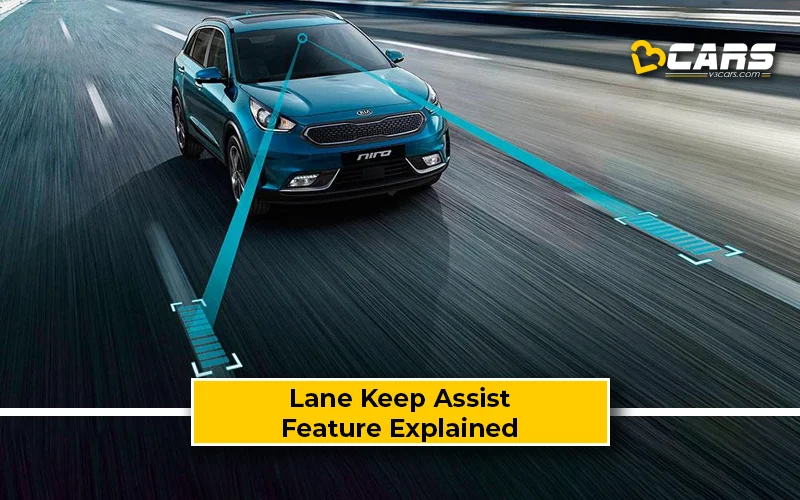Lane Keep Assist (LKA) – ADAS Feature Explained
Picture this: It’s 6 pm, the sun is setting, and you’re driving home after a long, exhausting day. Your commute is usually a breeze, but today, the traffic is heavy and the constant stop-and-go has you feeling drained. You’re on a long, straight stretch of highway when your eyes briefly flick to the rearview mirror. In that split second, your car begins to drift ever so slightly to the right, towards the edge of your lane. But before you can even correct it, you feel a gentle, almost imperceptible nudge on the steering wheel. The car is back on its intended path. What just happened?

You've just experienced Lane Keep Assist (LKA) in action - a quiet, unsung hero in the world of Advanced Driver Assistance Systems (ADAS). While its cousin, Lane Departure Warning (LDW), simply beeps at you when you stray, LKA is an active participant in your drive. It’s the silent co-pilot that’s always vigilant and ready to intervene when your attention lapses. Best of all, it's making our roads safer one gentle correction at a time.
How Does Lane Keep Assist Work?
At its core, Lane Keep Assist functions using sensors, a camera and computational power. Think of it as a set of highly trained eyes and a quick-thinking brain. The “eyes” are a forward-facing camera, typically mounted behind the rearview mirror, which constantly scans the road for lane markings. These aren’t just any lines; the system is trained to differentiate between solid and dashed lines, temporary paint in construction zones, and even a lack of lines on a rural road.
The car’s electronic control unit, or ECU, processes this information in real-time. It continuously calculates the car’s position relative to the detected lane lines. When the computer detects that your car is unintentionally drifting without a turn signal being activated, it takes over. It sends a signal to the car’s electric power steering system to apply a small amount of torque to the steering wheel. This isn’t a jarring takeover, but a subtle, persuasive nudge that guides the car back towards the centre of the lane.
For example, imagine you’re cruising on a highway with clear, bright white lines. The LKA system is confidently tracking your position. But what if you encounter a patch of road where the lines are faded? The system may struggle to maintain its precision and could even disengage. When such a scenario occurs, the car provides a dashboard alert to let you know LKA is no longer active. This demonstrates its intelligent design. It knows its limitations and hands back control rather than making a bad guess.
Real-World Benefits Of Lane Keep Assist
LKA’s primary benefit is enhanced safety. According to studies, unintended lane departures are a significant factor in many single-vehicle accidents. LKA helps reduce this risk, particularly in situations where driver distraction or fatigue becomes an issue. Consider a parent driving an MPV full of kids on a long road trip. The constant chatter and demands from the back seat could easily pull their attention for a moment. LKA acts as a crucial second pair of hands, ensuring the car stays centered even if the driver’s focus briefly shifts.
But the benefits extend beyond crash prevention. LKA also contributes to a more relaxed and less fatiguing driving experience. The system helps you maintain a consistent position in your lane, reducing the need for countless minor steering corrections. This can be a huge relief on long, monotonous drives, allowing you to arrive at your destination feeling less drained.
Understanding The Limitations Of Lane Keep Assist
While LKA is an incredible tool, it’s not a substitute for a fully engaged driver. The system is designed to assist, not to automate. If a car ahead of you swerves to avoid a pothole and you need to make a quick, un-signaled move into the next lane, LKA will likely resist this change by trying to pull the wheel back. This is by design. It correctly interprets your action as an unintentional drift and intervenes. To override it, you simply need to apply a bit more pressure to the steering wheel.
It’s also important to remember that LKA relies on visible lane markings. It may not work effectively in heavy rain or snow, or on roads where the lines are worn or non-existent. A perfect example is an ill-maintained road with fading or non-existent white lines. In these situations, the system will often deactivate, and the driver must be fully responsible for steering.
Your Hands, Your Responsibility: Why You Must Stay Engaged
“Why should my hands always be on the steering wheel even if LKA is active?” This is perhaps the question most owners and drivers of cars with LKA ask themselves while driving. The simple and direct answer is: LKA is an assistance system, not an autonomous one. It is a tool designed to support the driver, not to replace them.
Think of it this way: LKA is reactive, not predictive. It can only respond to a situation that is already beginning to happen, such as the car starting to drift across one lane to another, and it doesn’t have the human-like ability to anticipate sudden changes. For example, if a large truck in the next lane suddenly swerves towards you, LKA will not initiate a corrective manoeuvre until your car begins to cross the line. A human driver, however, would have already reacted instinctively to avoid the truck.
Because of this, most LKA systems are designed to detect if the driver has their hands on the wheel. If the system senses no torque input for a certain period, it will often provide a visual and audible warning, and if the driver still doesn’t respond, it will deactivate. This is a deliberate safety mechanism to ensure the human driver remains the ultimate decision-maker and is ready to take control at a moment's notice.
Lane Keep Assist (LKA) Vs Lane Departure Warning (LDW): What’s the Difference?
While often grouped, it’s important to distinguish between Lane Departure Warning (LDW) and its more advanced counterpart, Lane Keeping Assist (LKA):
- Lane Departure Warning (LDW): This system only warns the driver of an unintentional lane departure. It does not actively intervene to steer the vehicle. The responsibility to correct the vehicle’s path remains entirely with the driver.
- Lane Keeping Assist (LKA): This is an evolution of LDW. In addition to providing warnings, if the system detects a potential lane departure and the driver doesn’t respond, LKA will provide steering input to guide the vehicle back towards the center of the lane. In some advanced systems, the steering correction can become stronger as the vehicle gets closer to the lane boundary.
Also Read: Lane Departure Warning (LDW) – ADAS Feature Explained
Helpful Tools:
- Fuel Cost Calculator for Cars – Know your monthly fuel expense based on usage and mileage
- Car On-Road Price Calculator – Convert ex-showroom to on-road price for any city
Sell Used Car Online – Enter your car and contact details to get an instant price estimate and book a free inspection with our partner network


0 Comments